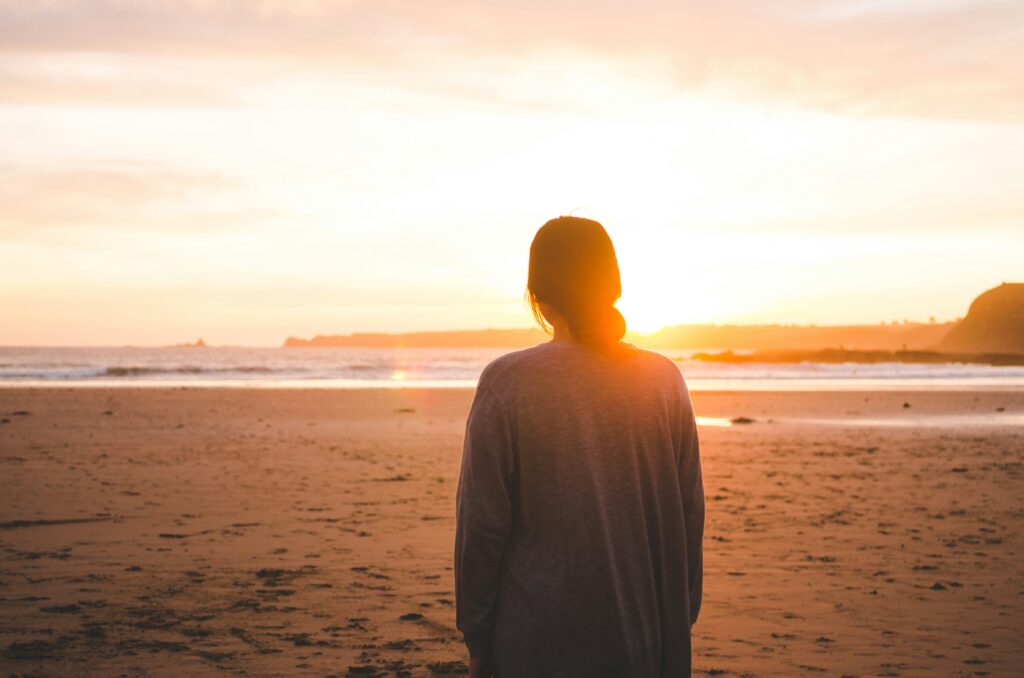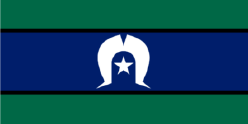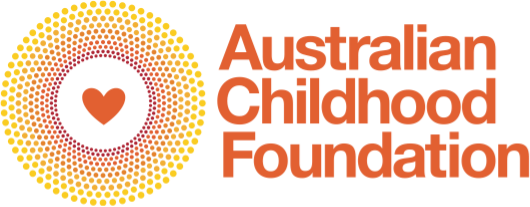To mark World Day of Fight Against Sexual Exploitation, our Practice Development Lead, Emma Rees, talked with Conrad Townson, Principal Advisor – Child Sexual Exploitation from Project Paradigm, a program of the Integrated Family and Youth Service (IFYS), about identifying and fighting against Child Sexual Exploitation (CSE) in our day-to-day work to ensure children and young people are free from harm through exploitation.
These valuable insights into child sexual exploitation help us reflect on our own lives as family and community members and our professional roles and consider how we can all contribute to the fight against sexual exploitation.
Before we explore further, it is useful to focus for a moment on why we need to understand what child sexual exploitation (CSE) is and importantly what we can all do to protect children and young people from harm through exploitation. Why is this important?
Child sexual exploitation is not well understood or identified by family members, in the community or by professionals and given this limited understanding and awareness, young people are not well protected or supported when they raise concerns and are often blamed and held responsible when CSE occurs. Victims and survivors often find it difficult to access the support and resources that meet their changing needs at different times in their lives due to the lack of knowledge and awareness of CSE and specialised support, responses and resources.
What is Child Sexual Exploitation (CSE)?
There isn’t a nationally consistent definition of CSE in Australia, so when explaining what CSE is, we use the UN definition of CSE to inform our understanding. The United Nations says,
“Child sexual exploitation means any actual or attempted abuse of a position of vulnerability, differential power, or trust, for sexual purposes, including, but not limited to, profiting monetarily, socially, or politically from the sexual exploitation of another. It includes but is not limited to exchanging money, employment, goods or services for sex. This includes transactional sex regardless of the legal status of sex work in the country. It also includes any situation where sex is coerced or demanded by withholding or threatening to withhold goods or services or by blackmailing.” United Nations Human Rights Commission, 2025
In an Australian context, and in the experience of practitioners in residential care services for example, CSE commonly appears as young people who are groomed in the community, both online and offline by adults who are offering them things like affection, attention, accommodation, clothing, expensive items, in exchange for sexual acts. On the outside that can look like a normal, conventional relationship. Research highlights that victims often think they are in control of their circumstances due to the process and impact of grooming, so they do not recognise that they are being exploited and may resist or reject attempts to help and support them.
What is it about CSE that makes it so difficult to understand and identify?
Having worked in child protection for the best part of two decades, one of the things that’s clear is that CSE intersects with other social issues being experienced by young people. This intersectionality is crucial to understand if we’re going to effectively disrupt CSE. We have a tendency, certainly in child protection systems, to be quite narrow in the way we view CSE without recognising that it can intersect with other issues. For example, research tells us that 40% of young people who are exploited have a criminal history, which underscores the intersection between youth crime, vulnerability and CSE. If young people have committed a crime, they may be reluctant or less likely to reach out for help and support from protective adults, especially from people in positions of authority for fear of repercussions. So, when we are looking at disrupting CSE if we are only looking for sexual exploitation or we view it through a narrow lens, without understanding how it overlaps with other issues, we can be prevented from identifying and acting to protect young people from exploitation.
How can we better understand these intersections and how they may act as a barrier for practitioners from identifying and disrupting CSE?
Drawing from a practice example helps us better understand how complex these situations can be.
We were working with a 13 year old girl who didn’t want to be in residential care and had a child protection history that demonstrated clearly that she had experienced a lot of rejection and faced significant vulnerabilities. This young person kept going missing overnight and was continually found in the company of older adult males. At first, the residential care practitioners viewed the young person and her behaviour as the problem. The language that was used to describe her behaviour and what she was doing was victim blaming in nature; she was frequently referred to as promiscuous. The young person described one of the 28-year-old adults as her boyfriend, but that description was not being challenged by residential care practitioners. Rather than understanding that the young person was seeking connection and attachment because that was an unmet need in her life, everyone viewed her behaviour as both challenging and risky. This young person’s experience is probably a typical example of how a sexually exploited young person in residential care presents.
What emerged over time was a realisation that this young person had been regularly given drugs and alcohol by older males in the community. She became addicted to ICE – a common tool used by perpetrators to create compliance and dependency. When discussions regarding the young person took place in professional stakeholder meetings the emphasis would centre on the young person’s drug and alcohol use and risk-taking behaviour as the problem, rather than understanding the unmet needs and vulnerabilities which were being manipulated by perpetrators to enable her sexual exploitation. When discussing CSE, we often use the terms ‘push’ and ‘pull factors’ as a means of contextualising these kinds of situations. Push factors are vulnerabilities or circumstances that the young person experiences, that might push them away from their home environment towards exploitation, such as a need for connection and acceptance arising from her early childhood rejection and trauma. Pull factors refer to those things that the perpetrator might utilise to groom and pull a young person into CSE, like drug and alcohol use.
What are the dangers of failing to recognise and disrupt CSE?
One of the important things to remember is that a perpetrator’s goal is to separate that young person from their safe and protective environments, and networks. So, it’s not unusual, in the process of grooming, for a perpetrator to make the young person dependent on them. Over time, the young person might come to experience the perpetrator as a safe person who meets their needs, not understanding or recognising the perpetrator’s motivation to sexually exploit them. It is not uncommon for a young person to gravitate to the perpetrator and even sometimes live with them. We’ve seen situations where young people living in families start to exhibit behaviour that has become so challenging that parents have struggled to manage. If parents don’t understand what may be going on in the background, and they don’t receive support to manage and support their child, they might feel that there is no option other than to relinquish their child to the care system. Or, in some cases, the young person is forced to move out which creates a dynamic where the young person has no-one else to go to, but the perpetrator.
For children and young people living in residential care, if CSE is not disrupted by severing their connection with the perpetrator and establishing stable, safe and positive relationships there is a real risk that children and young people under the age of 18 will leave their residential care placement, to go and live with perpetrators and find themselves in a long-term abusive or violent relationship.
What are some of the long-term impacts for a young person experiencing CSE?
If there isn’t the right support and intervention, the long-term impact on a victim of CSE can be profound. It is not unusual to see young people, suffer from a range of mental health issues into adulthood. The trauma can also impact on a person’s ability to work, and have meaningful, healthy relationships because they have difficulties developing trust. This all has a significant effect on daily life and experiences of victims and survivors.
What can help practitioners take a broader understanding and approach and transform the way they respond to sexually exploited children and young people?
At IFYS we try to provide a layered approach to the issue because it’s not enough to say “this is CSE and these are the characteristics”. People need to understand in an empathetic way how multi-layered CSE is, and the way it affects young people.
Like the National Centre, IFYS uses research to underpin the context and brings in the practical experiences of workers to underpin the approach to build the knowledge and capability of practitioners. We draw from case studies built on lived experience, so practitioners can develop empathy with young people and start to recognise how CSE plays out in real time. It’s critical that theory, practice and lived experience wisdom are brought together so practitioners come away with tangible, practical approaches that they can use in their everyday work.
Project Paradigm is a program of IFYS and has developed a range of practice tools and resources that are available on our website for practitioners, community members and even, children and young people to improve their understanding and recognise situations of CSE.
How can we learn from young people and as practitioners and community members join the fight against CSE?
We can all be aware of CSE; know the signs and what it looks like, be curious about young people’s behaviour, and understand that every victim’s experience is different.
Young people talk about the need to be believed and listened to. That’s really important, we often see that young people are not implicitly believed, they are often not viewed by the justice system as reliable witnesses, for example. It is very disempowering for a young person to reach out for help or tell someone about their experience but not feel listened to. This has a far-reaching impact on their lives. These messages are echoed by victims and survivors of child sexual abuse more broadly which underlines the critical importance of all practitioners being confident to protect and support children and young people.
Young people talk about how others often set the agenda for what needs to happen with professionals being focused on the parameters of their own timelines and processes rather than listening to a young person about what help and support needs to look like for them.
Policy timeframes and decision making frequently isn’t congruent with the experiences and needs of victims. One of the most important things that young people have taught us, is the importance of practitioners not giving up on them and trying to support them, even when they may appear not to want it. This also applies to family and community members.
Key takeaway messages:
- CSE is not well understood nor identified by family members, in the community or by professionals.
- There are significant, long-term health, wellbeing and social implications for children and young people who are subjected to CSE.
- Victims and survivors are often blamed and held responsible for CSE and are therefore not believed or responded to with compassion.
- Ensuring that young people are engaged with in safe, stable and positive environments and networks can protect them from CSE perpetrators.
- Sexually exploited children and young people need intervention and support from protective adults even if they appear resistant to support and intervention.
What can professionals do?
To join the fight against CSE there are actions that you can take today:
Educate yourself and others:
Learn about the signs of CSE by exploring the resources that are available on the Project Paradigm website and talk to young people about CSE.
Learn about the actions of perpetrators and consider the power dynamics and strategies they use to entrap and control young people. Read our ‘Perpetrators and Grooming’ resource to learn more.
Be a voice for children and young people:
Be curious if you notice significant behaviour changes for a child or young person and ask them about the people in their lives that they are communicating or spending time with. Read our ‘Responding to children’s disclosure of sexual abuse‘ resource to support you with these conversations.
Speak up if you have suspicions about the behaviour or wellbeing of a child. Ensure that the child or young person’s place of learning, police, health and other agencies are aware of your concerns.
Listen, believe and respond to victim survivors with compassion:
Maintain a curious mindset if a child, young person or adult tells you that they have been sexually exploited. Bear in mind that they might use different language to describe their experience. Ensure that you tell them you believe them, that it should not have happened to them, and that it was not their fault. Read ‘Interventions for adult survivors of child sexual abuse experiencing complex trauma‘.
To learn more about sexual exploitation, head here.










